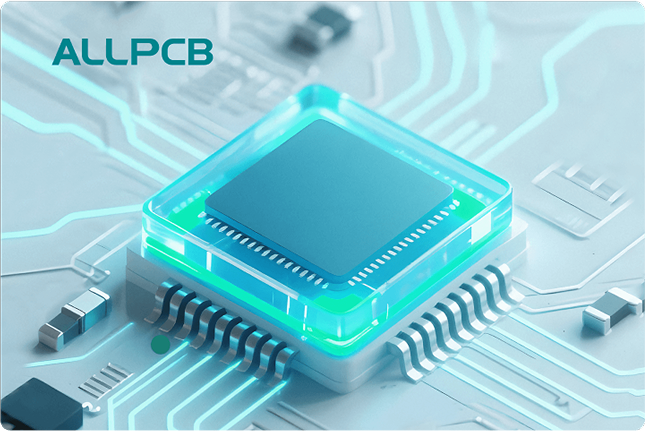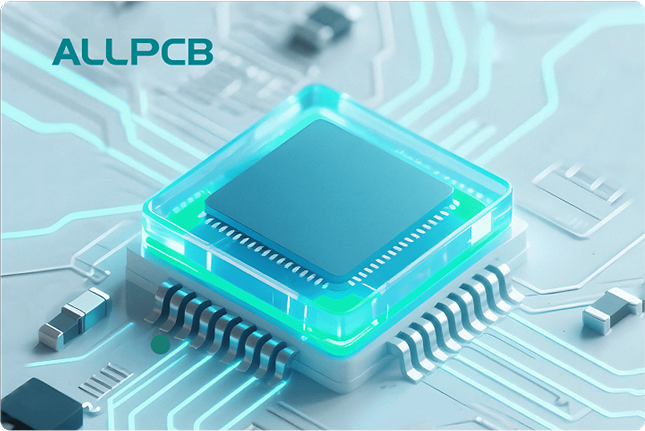Designing a printed circuit board (PCB) involves many critical decisions, and one of the most important is the PCB stackup. But what exactly is a PCB stackup, and why does it matter? Simply put, a PCB stackup refers to the arrangement of layers in a multilayer PCB, including conductive copper layers and insulating dielectric materials. A well-designed stackup ensures optimal signal integrity, power distribution, and impedance control while balancing manufacturing costs. In this comprehensive guide, we’ll dive deep into the essentials of PCB stackup, exploring how to optimize it for performance and cost. Whether you’re an engineer working on high-speed designs or a designer looking to reduce expenses, this blog will provide actionable insights to help you achieve your goals.
What Is a PCB Stackup and Why Is It Important?
A PCB stackup is the blueprint of how layers are arranged in a multilayer PCB. These layers include signal layers for routing traces, power and ground planes for stable voltage supply, and insulating dielectric materials that separate the conductive layers. The arrangement of these layers directly impacts the board’s performance in terms of signal integrity, power distribution, and electromagnetic interference (EMI) reduction.
Why does this matter? A poorly planned stackup can lead to issues like signal crosstalk, impedance mismatches, or inefficient power delivery, which can degrade the performance of your electronic device. On the other hand, a well-optimized stackup can minimize these problems, reduce manufacturing costs by using fewer layers or more affordable materials, and ensure your design meets its performance requirements. Let’s break down the key components and considerations for designing an effective PCB stackup.
Key Components of a Multilayer PCB Stackup
Before diving into optimization strategies, it’s essential to understand the building blocks of a multilayer PCB stackup. Here are the primary components:
- Signal Layers: These are the copper layers used for routing electrical signals between components. High-speed signals often require dedicated layers to maintain signal integrity.
- Power and Ground Planes: These layers provide a stable voltage supply and a return path for currents, reducing noise and improving power distribution across the board.
- Dielectric Layers: Made of insulating materials like FR-4, these layers separate conductive layers and influence impedance control through their dielectric constant (Dk), typically ranging from 3.5 to 4.5 for standard materials.
- Vias: These are small holes that connect different layers, enabling signal or power transfer. Their placement and type (through-hole, blind, or buried) impact the stackup design.
Understanding these components helps in planning the layer arrangement to meet specific performance goals. For instance, placing ground planes close to signal layers can reduce EMI, while using the right dielectric material can ensure consistent impedance for high-speed signals.
Factors to Consider for Optimizing PCB Stackup
Designing a PCB stackup isn’t a one-size-fits-all process. It requires balancing multiple factors to achieve the desired performance while keeping costs in check. Below are the critical considerations for optimization.
1. Signal Integrity for High-Speed Designs
Signal integrity refers to the quality of an electrical signal as it travels through the PCB. In high-speed designs, such as those operating at frequencies above 100 MHz, maintaining signal integrity is crucial to prevent data loss or errors. A well-designed stackup can minimize issues like crosstalk and signal reflections.
One effective strategy is to place signal layers adjacent to ground planes. This arrangement creates a controlled impedance environment, reducing noise. For example, in a 6-layer PCB, a common stackup might be Signal-Ground-Signal-Power-Ground-Signal. This setup ensures that high-speed signals on the outer layers are shielded by ground planes, minimizing interference.
2. Impedance Control for Consistent Performance
Impedance control is vital for high-speed signals, as mismatched impedance can cause signal reflections and degrade performance. The impedance of a trace depends on its width, the dielectric constant of the insulating material, and the distance to the nearest reference plane (usually ground or power).
For instance, a 50-ohm impedance is standard for many high-speed applications like USB or Ethernet. To achieve this, you might use a trace width of 6 mils (0.006 inches) on a dielectric layer with a thickness of 5 mils and a dielectric constant of 4.2. These values can be calculated using online tools or simulation software to ensure precision in your stackup design. Choosing the right dielectric material and layer thickness is critical for maintaining consistent impedance across the board.
Advanced designs may require specific materials with lower dielectric constants (e.g., Rogers materials with Dk around 3.0) for better impedance control, though these often come at a higher cost. Balancing performance with budget is key.
3. Power Distribution and Noise Reduction
Efficient power distribution is another critical aspect of PCB stackup design. Power and ground planes should be placed close to each other to create a low-inductance path for current, reducing voltage drops and noise. This is especially important in designs with high current demands or sensitive analog circuits.
For example, in an 8-layer PCB, dedicating inner layers to power and ground (e.g., layers 4 and 5) while keeping signal layers on the outer sides can optimize power distribution. Additionally, using multiple vias to connect power and ground planes ensures a robust connection, minimizing resistance and inductance.
4. Layer Arrangement for Cost Efficiency
The number of layers in a PCB directly affects manufacturing costs. More layers mean higher expenses due to increased material and processing requirements. Therefore, optimizing the layer arrangement to use the fewest layers possible without compromising performance is a smart approach.
For simpler designs, a 4-layer PCB with a stackup of Signal-Ground-Power-Signal might suffice. This configuration provides basic signal integrity and power distribution at a lower cost. However, for complex designs with high-speed signals and multiple power domains, a 6- or 8-layer stackup may be necessary to accommodate dedicated planes and routing space.
Another cost-saving tip is to use standard dielectric materials like FR-4 unless high-frequency performance demands specialized materials. FR-4 is widely available, cost-effective, and suitable for most applications with frequencies below 1 GHz.
5. Choosing the Right PCB Materials
The choice of PCB materials plays a significant role in stackup performance and cost. The dielectric constant (Dk) and loss tangent (Df) of the material affect signal speed and loss, especially in high-frequency designs. Standard FR-4 has a Dk of about 4.2 and is suitable for many applications, but for frequencies above 5 GHz, materials with lower Dk and Df values, such as PTFE-based laminates, may be required.
However, high-performance materials can increase costs significantly. Therefore, it’s important to evaluate whether the performance benefits justify the added expense. For many designs, a hybrid stackup—using high-performance materials only for critical layers—can provide a cost-effective compromise.
Common PCB Stackup Configurations
Let’s explore some standard PCB stackup configurations for different layer counts. These examples can serve as starting points for your designs, though adjustments may be needed based on specific requirements.
4-Layer PCB Stackup
A 4-layer PCB is a common choice for cost-sensitive designs with moderate complexity. A typical stackup might be:
- Layer 1: Top Signal
- Layer 2: Ground Plane
- Layer 3: Power Plane
- Layer 4: Bottom Signal
This arrangement provides good signal integrity for basic high-speed signals and efficient power distribution, all at a reasonable cost.
6-Layer PCB Stackup
For designs requiring better signal integrity and more routing space, a 6-layer PCB is often used. A common configuration is:
- Layer 1: Top Signal
- Layer 2: Ground Plane
- Layer 3: Inner Signal
- Layer 4: Power Plane
- Layer 5: Ground Plane
- Layer 6: Bottom Signal
This setup offers additional shielding for high-speed signals and supports more complex routing needs.
8-Layer PCB Stackup
An 8-layer PCB is ideal for high-speed, high-density designs. A typical stackup could be:
- Layer 1: Top Signal
- Layer 2: Ground Plane
- Layer 3: Signal
- Layer 4: Power Plane
- Layer 5: Ground Plane
- Layer 6: Signal
- Layer 7: Ground Plane
- Layer 8: Bottom Signal
This configuration provides multiple ground planes for superior EMI reduction and impedance control, making it suitable for advanced applications.
Practical Tips for Designing an Optimized PCB Stackup
Designing a PCB stackup that balances performance and cost requires careful planning. Here are some practical tips to guide you through the process:
- Start with Simulation: Use PCB design software with built-in stackup editors and impedance calculators to simulate signal behavior and power distribution before finalizing your design.
- Collaborate with Manufacturers: Early communication with your PCB manufacturer can help ensure your stackup is manufacturable and cost-effective. They can provide insights into material availability and layer constraints.
- Prioritize Critical Signals: Allocate outer layers for high-speed signals to minimize via usage and ensure easy access for testing or rework.
- Minimize Layer Count: Aim for the fewest layers possible while meeting performance needs to keep costs down.
- Test and Iterate: Prototype your design and test for signal integrity, impedance, and power issues. Use the results to refine your stackup for future iterations.
Balancing Performance and Cost in PCB Stackup Design
Optimizing a PCB stackup is about finding the sweet spot between performance and cost. High-performance designs may require more layers, specialized materials, and tighter impedance control, all of which increase expenses. Conversely, cost-driven designs may sacrifice some performance to use fewer layers or standard materials.
For example, a consumer electronics product might use a 4-layer PCB with FR-4 material to keep costs low, while a telecommunications device operating at 10 GHz might require an 8-layer PCB with low-loss dielectric materials for optimal signal integrity. Understanding the specific needs of your application is the first step in making informed decisions about your stackup.
Conclusion
Understanding and optimizing PCB stackup is a critical skill for any engineer or designer working on multilayer PCBs. By carefully planning layer arrangement, selecting appropriate materials, and considering factors like signal integrity, impedance control, and power distribution, you can create designs that perform reliably without breaking the budget. Whether you’re working on a simple 4-layer board or a complex 8-layer design, the principles discussed in this guide can help you achieve your goals. Remember to leverage simulation tools, collaborate with manufacturers, and test your designs to ensure success in your next project.
 ALLPCB
ALLPCB







